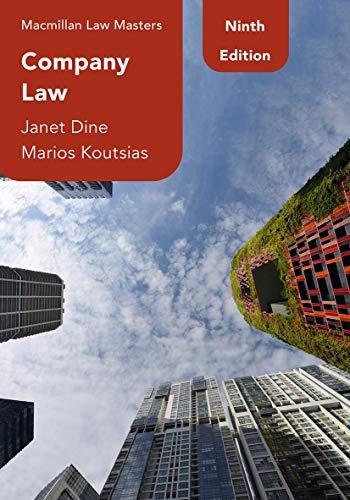Que Is the following point address the johnson&johnso organization
1.Restrictive covenants such as non competition and non solicitation provision in business law
2.Access and use of confidential proprietary information
3.performance evaluation
in 600 words
INTERPRETATION OF REAL ESTATE LEGISLATION 1 You (the learner) to provide interpretation services real estate legislation. Mr. Smith is a businessman who invests in real estate frequently. Mr. Smith wants to sale one of his houses from the residential area of Springvale and purchases a commercial land to build a shopping mall. You as a real estate agent are given a job to identify and access the recent amendments in real estate rules and regulations regarding sale and purchase of land in a residential and commercial area of Australia. Communicate these legislative requirements and amendments to the clients. Arrange the source documents of the real estate legislation applicable to this scenario. Make a video of communication with the client regarding the interpretation of real estate legislation. Submit the video along with the legislative documents for assessment. Use this template to record details of the process. Learner Name Real Estate Agency name Date Name of the landlord Name of the Client Nature of real estate business (for example Land settlement/ purchasing or selling land or property/ leasing land or property ) What other stakeholders will be involved What legal/industry requirements are relevant to this real estate business Were any of the following undertaken? (If so provide details) What process did you use to clarify client and real estate requirements How did you confirm the validity of client intentions and information?? What research did you undertake for marketing? Signing agency documents Communication with stakeholders Using networks Record keeping of all the(01.06, 01.07 HC) In 1984, Congress enacted legislation ordering the Secretary of Transportation to withhold 5 percent of federal highway funds from states that did not adopt a 21-year-old minimum drinking age. South Dakota, a state that permitted persons 19 years of age to purchase alcohol, challenged the law. In South Dakota v. Dole (1987), the Court delivered a 7 to 2 decision that held that Congress, acting indirectly to encourage uniformity in states' drinking ages, was within constitutional bounds. The Court found that the legislation was in pursuit of "the general welfare," and that the means chosen to do so were reasonable. The Court also held that the constitutional limitations on spending power were not prohibitions on congressional attempts to achieve federal objectives indirectly. The 5 percent loss of highway funds was not excessive. Source: Oyez, South Dakota v. Dole (1987) (A) Identify the constitutional clause that is common to both South Dakota v. Dole (1987) and United States v. Lopez (1995). The constitutional clauses that were infringed upon in the cases above include the Commerce Clause and the Spending Clause.For the balance of payments all debits in one account must act as credits in another account. which of the following expressions indicates this? 0 current account = financial account current account + financial account = capital account current account +financial account+ capital account = D 0 current account = merchandise trade balance









